September 11th, 2008 admin
As I mentioned in an earlier post, Tom Stoddart is working on a long term project called This England. We’re also joined by photographer Andy Greaves who is working on a documentary about England for his MA course. You can see a few initial images from his project, called ‘England, My England’, on his website here. I look forward to seeing how it progresses.
Posted in MISCELLANEOUS | Comments Off on ENGLAND, MY ENGLAND
September 6th, 2008 admin
We took a brief diversion this weekend to attend my cousin’s wedding in Edinburgh. Driving north on the A1 from Berwick it was intriguing to see the different ways that England and Scotland mark their border posts. As you head north drivers are met with a large, clear sign based on the Scottish flag, which welcomes you to Scotland. It could be seen from a distance, even in the pouring rain.Â
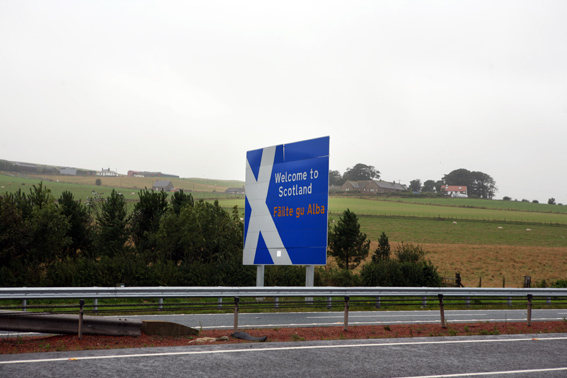
Â
Driving south a couple of days later, in similarly depressing weather conditions, I only just spotted our border post. A rather pathetic stone block, covered in lichen, with the barely readable words ‘England’. Â
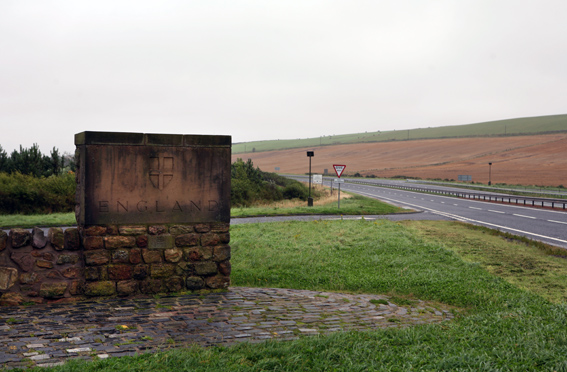
Â
Are there conclusions to be drawn from these contrasting declarations of identity?!
Â
Posted in MISCELLANEOUS | 1 Comment »
Although the exhibition ends today, I wanted to give a quick plug for Henry Iddon’s photographs taken in the Lake District. Spots of Time have been on display at the Wordsworth Trust gallery at Dove Cottage, Grasmere, since March 2008.
Blackpool-based photographer Iddon spent 18 months perched on fell tops throughout the night to capture the effects of artificial light at different times and seasons. Bright clusters of streetlamps and house lights dot the unusual images of the English Lake District, with the wider orange glow of major towns such as Barrow-in-Furness diffusing the night sky behind.
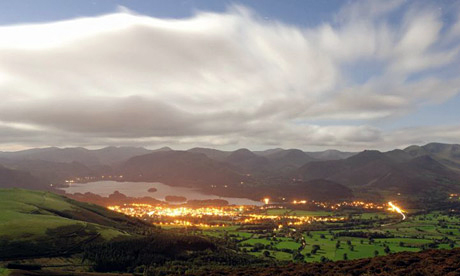
Keswick and Derwent Water seen from the slopes of Skiddaw taken at 11.22pm, when sunset was 7pm. © Henry Iddon
Lord Smith of Finsbury, chair of the Wordsworth Trust and former Culture Secretary, said that the photographs achieved the unusual feat of seeing one of Britain’s most exhaustively recorded landscapes through new eyes. He said: “They show us the bright, glowing, night-time impact of humankind, but set within the immensity of the broader landscape. No-one can look at them without being moved to ponder on the relationship of reverence and of interdependence that we ought to foster with the natural world around us.”
Don’t worry if you don’t make it to the exhibition today – I felt the lighting in the gallery really let the prints down – Iddon has produced an impressive website for the project. View it here.
Â
Posted in MISCELLANEOUS | Comments Off on SPOTS OF TIME BY HENRY IDDON
We’re now in Cumbria and have spent the last couple of days visiting relatives. I’ve always been interested in people’s interior design choices so here are a couple of bathroom interiors at one of my relatives-
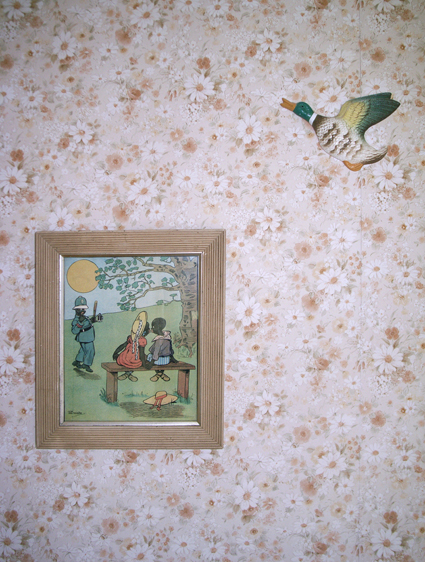
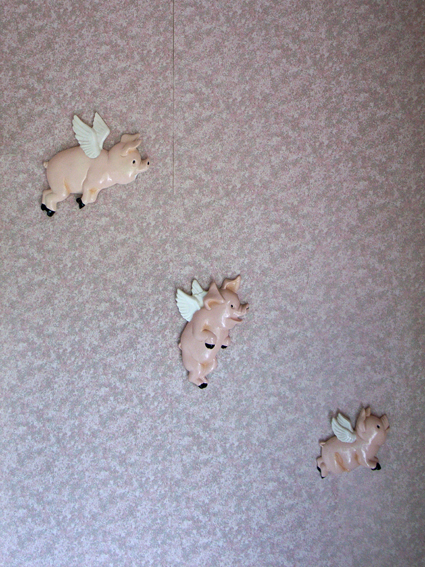
Posted in MISCELLANEOUS | Comments Off on INTERIOR DESIGN
After spending Friday night drinking in the Easington Working Men’s Club I was reminded of Chris Coekin’s fabulous body of work Knock Three Times: Working Men, Social Clubs and Other Stories.Â
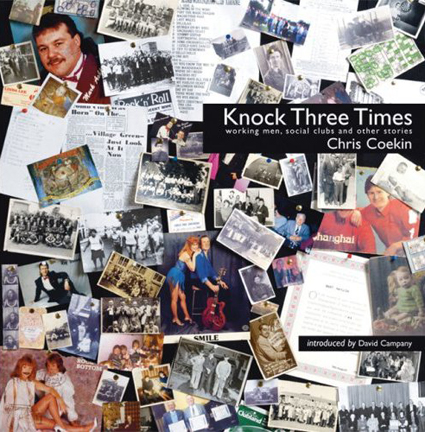
Chris’s family has a long tradition of socialising in Working Men’s Clubs. As a child Chris was taken to many clubs in his hometown of Leicester and during family holidays around England. Many of these clubs have long since disappeared. Working Men’s Clubs were originally set up for the support and education of the working man. Knock Three Times is set in the Acomb WMC York where Chris first photographed in 1996. The club, and its members, symbolise the working class community at large.Â
“Using metaphorically driven images and archive ephemera, Chris explores his cultural roots and identity. The vivid, ambiguous, and often autobiographical images reflect his recollections of visiting WMCs as a child. They interrogate the complexities associated with growing up within a working class culture, ideas of masculinity, relationships and its work ethic. The notion of ‘common sense’ provides the foundation for a narrative that looks beyond the surface appearance of WMCs.” As quoted on Chris’ profile page of the University College for the Creative Arts in Rochester, where he lectures.
You can see a slideshow of the work see showcase of the work here and read a review on Jörg Colberg’s weblog here.
Â
Posted in MISCELLANEOUS | Comments Off on KNOCK THREE TIMES
During a visit to Middlesbrough last week I came across six pubs in one day that were either boarded up or had ‘for sale’/ ‘pub to let’ signs up outside, such as the Brambles Farm on Cargo Fleet Lane.
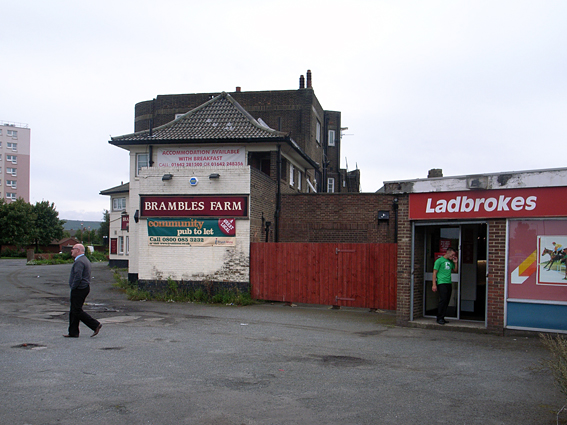
While there are approximately 57,500 public houses in the UK with one in almost every city, town and village, statistics compiled by the British Beer and Pubs Association found that 27 pubs a week closed in 2007 – seven times faster than the previous year and 14 times faster than 2005. This means that four a day are closing in a country where the pub has been an integral part – some might say essential part – of social, cultural and business life for centuries. (Follow this link for a short history of the pub).
In many places, especially in villages, a pub can be the focal point of the community, playing a complementary role to the local church in this respect. The writings of Samuel Pepys describe the pub as the heart of England and the church as its soul.
So why are pubs in trouble? Publicans and landlords talk about rising rent, rates, fuel, property, taxation, lower disposable income (thanks to higher household bills and mortgages), the smoking ban, the trend towards wine drinking, and fierce competition from off-licences, newsagents and supermarkets. Pubs have also suffered from the abundance of alternative leisure pursuits available these days – fifty years ago the choice would have been the cinema, dance hall or a few sporting events. However, somewhat surprisingly given the almost daily headlines of the British binge drinking culture, as a nation we’re actually drinking less. According to the BBPA, average consumption is down 15 per cent on 2000.
One place where I didn’t find much evidence of a slow-down in drinking was Easington Working Men’s Club in Easington Colliery, County Durham, where we enjoyed a pint on Friday night. The place was packed with a full house for bingo and quiz night.
Â
Posted in MISCELLANEOUS | Comments Off on LAST ORDERS
….Fish & Chips (with mushy peas).
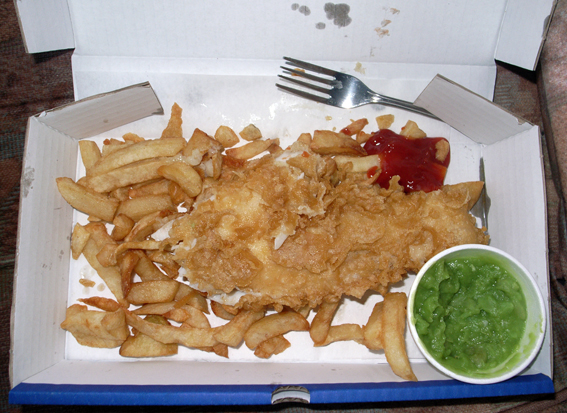
We’ve been on the road for most of the day having traversed through the Peak District heading north to Richmond (on the edge of the Yorkshire Dales). We decided to pull over in Ripon for an early tea and given it’s Friday night, what better than a serving of fish and chips with a side order of mushy peas. Our chosen chippy, the curiously named ‘Whitby Harbour’ (we’re at least fifty miles inland from Whitby), didn’t disappoint.
Fish and chips has been the nation’s favoured takeaway dish since the late Victorian era and has only lately been challenged for supremacy by Indian food. For the gourmets among you, why not read this short history of this humble dish.
Â
Posted in MISCELLANEOUS | Comments Off on IN PRAISE OF….
We’ve just had a couple of days relaxing in the Peak District where we were joined by our good friends from Brighton (and fellow photographers), Karoki Lewis and Poppy Berry.Â
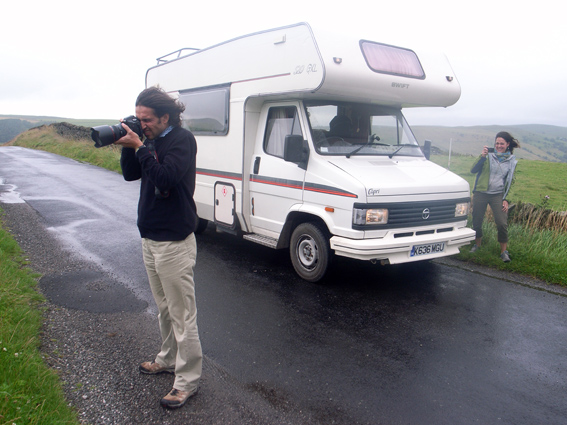
Â
Posted in MISCELLANEOUS | Comments Off on TIME OUT
We’re leaving Hebden Bridge in Yorkshire and heading to Birmingham for the next couple of days. Tomorrow I will be a panelist on the Rhubarb-Rhubarb seminar ‘The Value of the Image’. If you’re going, please be sure to say hi afterwards.
Here are the details-
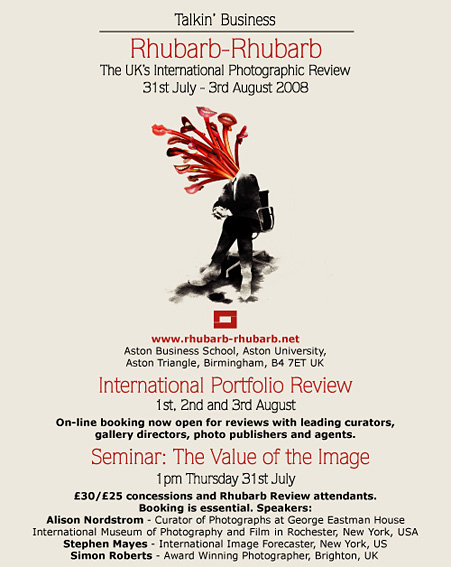
RHUBARB-RHUBARB PRESENTS THE VISIONARY ‘TALKIN’ BUSINESS’ SEMINAR
with
Alison Nordstrom – Curator of Photographs at George Eastman House International Museum of Photography and Film in Rochester, New York
Stephen Mayes – International Image Forecaster, New York
Simon Roberts – Award Winning Photographer, Brighton
Conceptualised and chaired by Rhonda Wilson – Creative Director, Rhubarb-Rhubarb
Three remarkable people with a wealth of experience in the fields of Fine Art/Documentary/and Commercial/Stock photography discuss The Value of the Image at a time where technologies and economics are inextricably bound up in the futures of emerging and mid career photographers, and the ability of those already ‘up there ‘ to remain so.Â
Far from simply being a question of producing ‘good’ images, the demands on photographers – to be smart in business and savvy in protecting themselves and their images from real time and virtual exploitation, keeping their agents happy, selling work and finding the resources to finance new projects – are the harsh realities for anyone wishing to stay alive in the increasingly complex ladder of opportunity within the image sector.
In this fascinating seminar, Simon Roberts gives a contemporary account of the skills involved in becoming and remaining an international photographer of repute; Alison Nordström will discuss the acquiring and caring for work in perpetuity – how working with museum collections is fundamentally different from working with sales galleries, temporary exhibitions or alternative spaces and Stephen Mayes will be predicting the future with the demise of copyright and the rise in the value of the web for selling ideas.
Thursday 31st July 2008 at 1pm
Lecture Theatre, Aston Business School, Aston University, Aston Triangle, Birmingham B4 7ET
£30 , £25 concessions and Rhubarb Review attendants– booking essential –
please email info@rhubarb-rhubarb.net to reserve a place
Â
Posted in MISCELLANEOUS | Comments Off on RHUBARB-RHUBARB SEMINAR
I enjoyed this cartoon in today’s Times by Morland showing an embattled Prime Minister, Gordon Brown holidaying in Southwold, Suffolk.
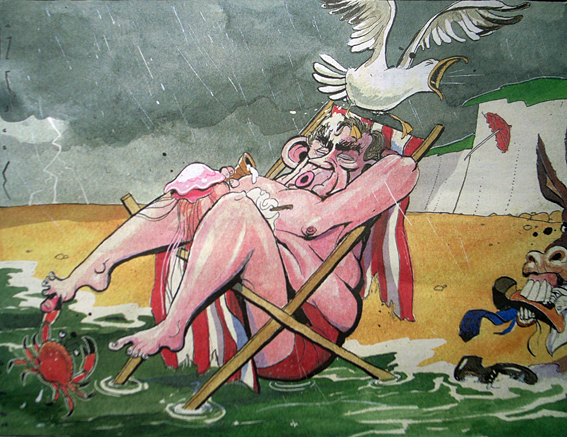
Â
Posted in MISCELLANEOUS | Comments Off on BROWN IN SOUTHWOLD












